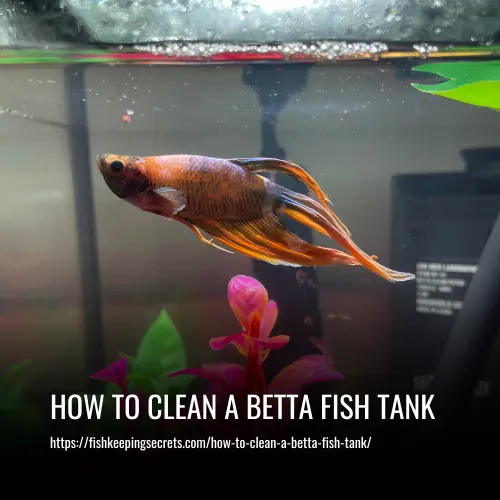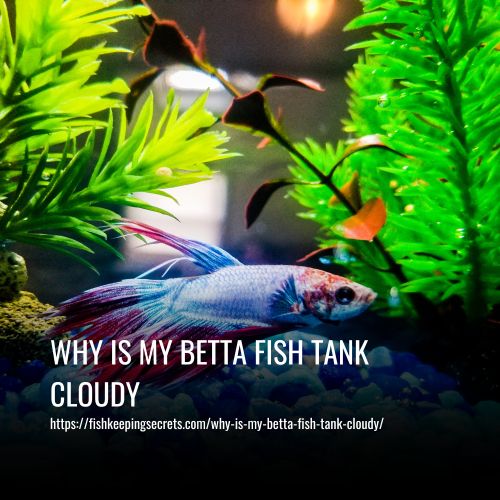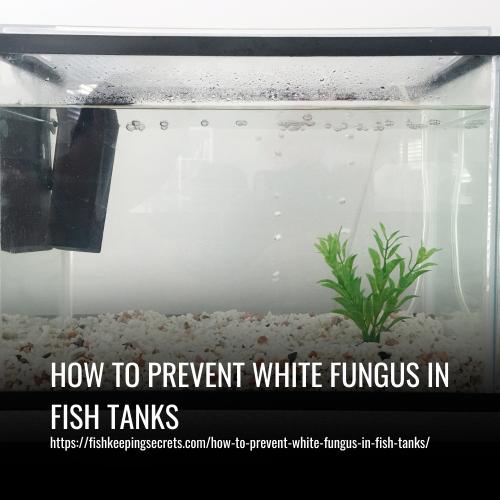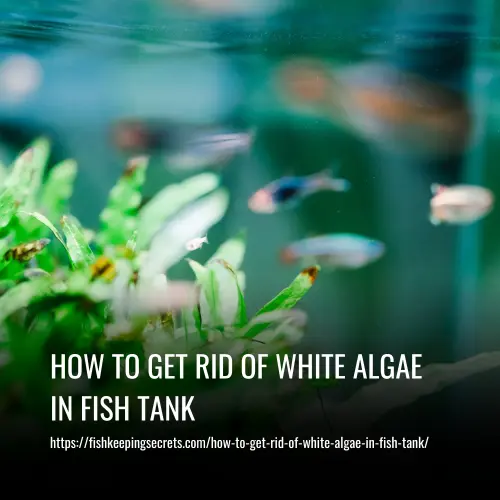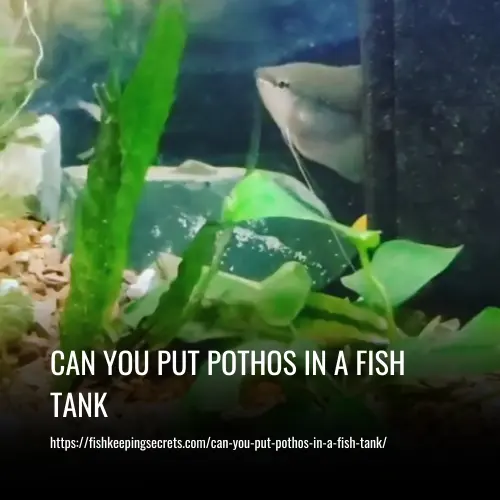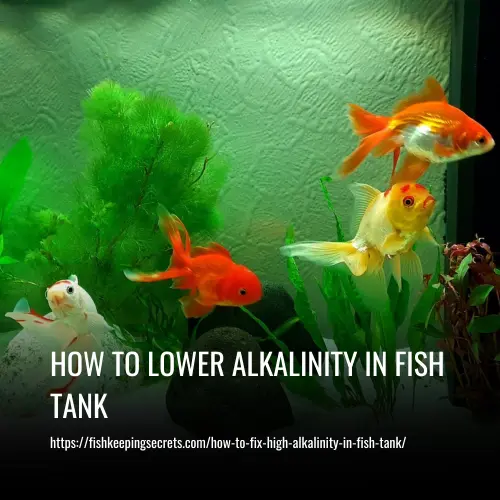Why Are My Fish At The Top Of The Tank? Reasons & Solutions
This post contains affiliate links. As an Amazon Associate, we earn from qualifying purchases.
Fish may be at the top of the tank because they need more oxygen. The water near the surface usually has higher oxygen levels. To address this, ensure that your tank has good water circulation, that the surface water is in motion, and that the tank is not overheated.
Here are some reasons why your fish may stay at the top of the tank:
- 1. Lack of Oxygen
- 2. Overstocking
- 3. Lack of Water Movement
- 4. Poor Tank Conditions
- 5. Poor Lighting
- 6. High Water Temperature
- 7. High Ammonia Levels
- 8. Overfeeding
- 9. Disease
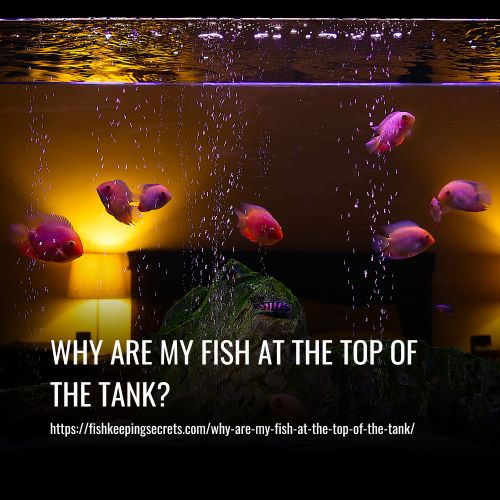
Reasons Why Your Fish May Stay At The Top Of The Tank
There are several reasons why your fish may stay at the top of the tank. These include:
1. Lack of Oxygen
When your fish stays at the top of the tank, it may indicate that there isn’t enough dissolved oxygen in the water. This can be a serious issue as it compromises the fish’s survival. You may observe gasping for air as the fish tries to compensate for the low oxygen levels. Lethargy and reduced movement are also signs that the fish is conserving oxygen. It’s crucial to address this issue promptly by improving the oxygenation of the tank water.
2. Overstocking
Overstocking your aquarium can lead to insufficient oxygen levels and elevated levels of carbon dioxide (CO2). This, in turn, can negatively impact your fish’s well-being. If the tank is overcrowded, there won’t be enough oxygen to sustain all the fish. Additionally, the increased CO2 levels can have harmful effects on your fish’s health. To avoid these problems, make sure to consider the appropriate tank size for the number of fish you have.
3. Lack of Water Movement
Insufficient water movement can lead to low oxygen levels in the aquarium, which can negatively impact your fish. It is important to find ways to keep the tank aerated to prevent fish from swimming at the top of the tank and potentially dying. Ensuring adequate water movement helps maintain oxygen levels and creates a healthier environment for your fish.
4. Poor Tank Conditions
Cloudy water caused by poor tank conditions can also affect your fish. Just like humans, fish need a clean environment to thrive. The quality of water in your tank and the overall tank conditions can impact the oxygen concentration in the water. It is essential to regularly clean and maintain your tank to prevent the accumulation of waste and ensure optimal oxygen levels for your fish.
5. Poor Lighting
Insufficient lighting in your aquarium can lead to low oxygen concentrations in the water. Live plants require light to carry out photosynthesis and produce oxygen, but in poorly lit environments, they may consume oxygen instead of carbon dioxide. This can result in decreased oxygen levels in the tank. Additionally, excessive algae growth in a brightly lit tank can have a similar effect, as the algae will also consume oxygen. Ensuring proper lighting levels and managing algae growth can help maintain adequate oxygen concentrations in the water.
6. High Water Temperature
The water temperature in your fish tank can also impact oxygen levels. Warmer water holds less dissolved oxygen compared to colder water. If the temperature in your tank is too high, it can lead to reduced oxygen availability for your fish, causing them to struggle and potentially die. Monitoring and regulating water temperature within the appropriate range for your fish species is essential for their well-being.
7. High Ammonia Levels
One possible cause is high levels of ammonia in the water. This can occur due to poor water conditions or a buildup of toxins. Even if the water appears clean, leftover food and fish waste can result in increased ammonia levels. Using a filter can help remove these toxins and maintain a healthier environment for your fish.
8. Overfeeding
One possible reason for your fish floating at the top is overfeeding. When you give your fish more food than they can consume, excess leftovers can accumulate in the tank, leading to the production of toxic nitrates and ammonia. This can result in ammonia poisoning, which can cause your fish to behave strangely and ultimately lead to their death. If you notice your fish staying in the top corner of the tank, it may be a sign of overfeeding.
9. Disease
Another potential reason for your fish floating at the top is illness. Lethargy, listlessness, and swimming at the top of the tank are common symptoms of a sick fish. Fish that are ill may also struggle to breathe, similar to fish that are deprived of oxygen. There are several factors that can contribute to fish diseases, including dirty tanks, poor tank environment, high temperatures and pH levels, lack of oxygen, and incompatible tank mates.
There are several diseases that can cause fish to stay at the top of the tank, usually due to difficulty breathing or swimming properly. Some common diseases include Aeromonas hydrophila, Columnaris, flukes, Ich, and swim bladder disorder.
Solutions To Prevent Fish From Staying at the Top of the Tank
To prevent fish from staying at the top of the tank, there are several easy solutions you can implement:
1. Quarantine New Fish
Before adding new fish to your main tank, quarantine them in a separate tank for about two weeks. This allows you to observe and detect any potential diseases or illnesses before introducing them to the rest of your fish. Use a smaller quarantine tank specifically for this purpose and introduce the new fish in small groups.
Keep a close eye on their behavior and look out for symptoms such as odd swimming patterns, loss of appetite, sudden discoloration, and weakness. If you notice any signs of sickness, remove the affected fish from the tank and treat it separately before reintroducing it to the main tank.
2. Cycle Your Tank
It’s crucial to cycle your tank before adding any fish to minimize stress and create a healthy environment. To cycle your tank, allow the pH levels to balance out naturally and give beneficial bacteria time to grow. You can use a water conditioner to speed up the process and ensure the water is safe for your fish.
It’s also recommended to gently stir the water to improve water flow and trap oxygen. Consider installing an air pump to maintain proper aeration and ensure your fish can breathe comfortably. Following these steps will help create a stable and safe environment for your fish.
3. Use a Water Filter
Invest in a good quality water filter that has both biological and chemical filtration capabilities. This will help remove toxic buildup from the water and improve overall water quality. Ensure that you clean the filter regularly to prevent blockages and ensure its effective functioning. A blocked filter can lead to elevated ammonia levels and cause stress to your fish.
4. Regularly Clean the Tank
Cleaning your fish tank regularly is essential to prevent the spread of diseases and maintain a healthy environment for your fish. Once a month, thoroughly clean the tank by removing decorations and vacuuming the substrate to remove any slime or dirt buildup. Additionally, change at least 25 percent of the water in the tank at least twice a month to keep the water fresh and free from harmful substances.
5. Temperature Regulation
Use a tank thermometer to monitor the water temperature and install a tank heater to keep the temperature stable. This will ensure that your fish are comfortable and not exposed to extreme temperature fluctuations. If you need to cool down the tank, you can add a few ice cubes in an airtight bag. This will help lower the temperature without causing sudden changes.
6. Proper Lighting
Ensure that your tank is well-lit to provide enough light for your plants to conduct photosynthesis. However, be mindful of algae growth. If you notice a thin film of algae at the top of the tank, remove it immediately. Look for natural ways to control and prevent algae growth. Additionally, eliminate any potential hiding places where algae can thrive.
7. Avoid Overfeeding
Overfeeding your fish can lead to constipation and Swim Bladder Disorder (SBD), causing additional stress and making them more susceptible to other diseases. Feed your fish small portions of food that they can consume within three minutes, once or twice daily. Reduce the quantity of food given to ensure it is entirely consumed within the timeframe.
If necessary, hand-feed your fish if they are not eating from the regular feeding routine. Also, consider adding aquarium salt to provide necessary nutrients. Include sufficient hiding spots in your tank to prevent aggression from other fish. This helps create a comfortable and stress-free environment for your fish.
By following these guidelines, you can promote a healthy and happy environment for your fish, reducing the chances of stress-related issues and improving their overall well-being.
FAQs
When your fish swim to the top, it usually means that they are not getting enough oxygen. Fish rely on their gills to breathe, and if there is not enough oxygen in the tank, they will swim to the surface to breathe in the oxygen-rich water. This behavior can be a sign of stress, and you may notice your fish gasping or exhibiting other signs of discomfort while they are at the surface.
If your fish is floating at the top of the tank but still alive, it could be a sign of swim bladder disease. This is more common in certain species like goldfish. Stress, moving to a new aquarium, or gastrointestinal disorders could be the underlying cause. It’s best to consult with a professional to determine the exact cause and find a solution.
To oxygenate a fish tank, you can use an air pump or fan to increase water movement and expose the liquid to the air, making it easier for the fish to breathe. However, be cautious not to disrupt other factors like temperature. It is also important to avoid overcrowding the tank, as this can lead to oxygen depletion. Start with one tank and a small school of fish to manage and gradually expand as you gain experience. If necessary, move fish to a new tank or remove some to maintain a healthy balance.
Yes, all these factors can negatively affect aquarium fish. In extreme cases, low oxygen, high ammonia levels, and disease can all contribute to fish hanging at the surface of the water. This is especially common in unfiltered cold water bowls with goldfish. The stress from poor water conditions can lead to disease, and it is unlikely that any fish can survive in such circumstances for long.
If your fish are staying at the top of the tank but not gasping for air, there could be several reasons for this behavior. Poor water quality, overcrowding, lack of oxygen, or high levels of ammonia or nitrites are potential factors. To address this issue, make sure to clean the tank regularly, provide proper aeration, and regularly check the water parameters to maintain a healthy environment for your fish.
There are a few possible reasons why your fish might be at the top of the tank after a water change. One reason could be a sudden change in water temperature if you didn’t match it to the tank. This could stress the fish out and cause them to behave erratically. Another possibility is that the water change has disturbed the fish and caused them to feel stressed. Additionally, if you cleaned the gravel and filter during the water change, it’s possible that you may have disrupted the balance in the tank and caused an ammonia spike, which can make the fish sick.
Fish can recover from a lack of oxygen if the issue is addressed promptly. By adjusting the filter or adding an air stone to increase oxygen levels in the tank, the fish should start to behave normally. However, if the lack of oxygen is prolonged, it can cause permanent damage or even be fatal for the fish. Therefore, it is important to take immediate action.
Conclusion
In conclusion, it’s important to remember that fish may be at the top of the tank for a variety of reasons, including poor water quality, lack of oxygen, or stress. It’s crucial for fish owners to regularly test the water parameters, ensure proper filtration and aeration, and provide a suitable environment for their fish.
Additionally, observing the behavior of the fish and making necessary adjustments to their care can help alleviate any issues that may be causing them to stay at the top of the tank. By being attentive to their needs, fish owners can promote the health and well-being of their aquatic pets and create a thriving aquatic ecosystem in the tank.

